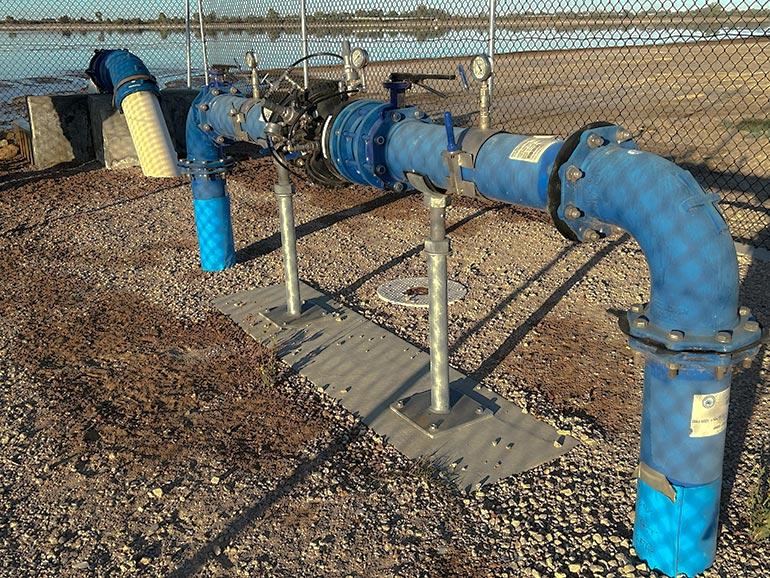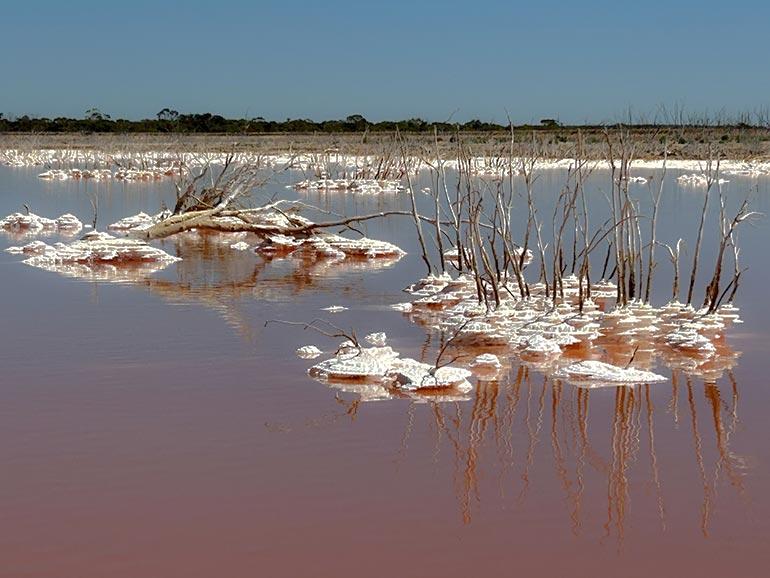Salt interception schemes are large-scale pumping operations that divert saline groundwater and drainage water before it enters rivers. The Murray–Darling Basin has 13 of these schemes, which together stop about half a million tonnes of salt per year from reaching the river systems.
Salt is a natural part of Murray–Darling Basin landscapes and rivers. The groundwater systems close to the River Murray hold more than 100,000 million tonnes of salt, which comes from weathered rocks and rainfall.
Excessive salt in groundwater can be detrimental to the health of plant and animal life, as well as the ability for humans to use the water. This means salt interception schemes are an important asset.
Members of the 2023 cohort of the Murray–Darling Basin Authority’s graduate program visited the schemes around Mildura, Victoria, to learn how they operate.

Marnie Huxley, one of the graduates, said they were intrigued by the term ‘pigs’, which are large, sponge-like cleaning tools that are pushed through the pipes to remove excess build-up of iron.
“We learned that because the groundwater pumped by the interception schemes is highly saline, using the pigs is an essential part of keeping the bores running."
The tour started with an examination of bores at Merbein before travelling to Mallee Cliffs over the river in New South Wales, to view decommissioned and working bores.
The largest schemes – at Rufus River and Buronga – have the potential to remove up to 200 tonnes of salt from groundwater every day.

The tour group also visited a salt disposal basin where extracted groundwater is left to evaporate. The minerals in the salt give the water a pinkish tinge which contrasts with the surrounding environment.
"The pink water of the salt disposal basin was an incredible sight. We were surprised to discover that some of the salt is harvested for sale, and what's left will take decades to slowly filter back into groundwater."

Contact the MDBA media office at media@mdba.gov.au or 02 6279 0141